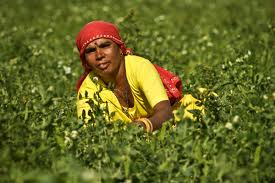The Bikaner Development Authority Bill, 2025
<p>The Bikaner Development Authority Bill, 2025, passed by the Rajasthan Assembly, aims to establish a Bikaner Development Authority to regulate development activities in the Bikaner district. The bill
<p>The Bikaner Development Authority Bill, 2025, passed by the Rajasthan Assembly, aims to establish a Bikaner Development Authority to regulate development activities in the Bikaner district. The bill
<p>This report summarises the findings of a study conducted by North Energy on behalf of Nature Kenya, RSPB, ActionAid, and BirdLife International. The study assesses the life?cycle greenhouse gas emissions from a proposed jatropha plantation in the Dakatcha woodlands, Kenya, that will mainly be used for biofuels in the European market. <br /> </p>

<p>The Compendium of Environment Statistics 2010 prepared under the broad Framework for Development of Environment Statistics provided by the United Nations Statistics Division and adopted by the Steering Committee on Environment Statistics set up by CSO during 1996. The five parameters of the framework, namely, biodiversity, atmosphere, land/soil, water, and human settlements have been used in this compendium. </p>
<p>This project evaluates the life cycle greenhouse gas emissions associated with the proposed scheme to produce biofuels from jatropha cultivated in the Dakatcha woodlands by Kenya Jatropha Energy Ltd (100% owned by Nuove Iniziative Industrialisrl of Milan, Italy) for relevant uses in Kenya and Italy.
Due to high land cost and banks' reluctance in financing renewable power projects, Punjab has not been able to tap solar energy optimally despite abundant sunshine. Experts say, for a solar power project to be financially viable, land cost should not be more than Rs. 2 lakh per acre. But even in backward areas of Punjab, an acre costs more than Rs. 15 lakh.
<p>A central challenge for sustainability is how to preserve forest ecosystems and the services that they provide us while enhancing food production. This challenge for developing countries confronts the force of economic globalization, which seeks cropland that is shrinking in availability and triggers deforestation.
<p>The World Bank Institute and Forest Carbon Partnership Facility have released a manual for assessing the true costs of REDD+ action aimed at saving and restoring forests.
<p>The Compendium on Capacity for Implementing Land Based Mitigation has been produced in response to an identified demand from Common Market for Eastern and Southern Africa (COMESA) and other country officials for greater information on national policy contexts regarding the inclusion of land in the<br /> climate change solution. <br /> </p>
<p>As this assessment will show, an extraordinary amount of time, effort and resources have been dedicated to pursuing land based solutions to climate change by both developing and developed countries across the globe. Progress has been made in building capacity and readiness, tools and techniques and principles and partnerships.
After developing rating systems for homes, factories and SEZs, the Indian Green Building Council (IGBC)
<p>The world has a dust problem. There is more of it than there used to be. Apparently, the amount of airborne dust doubled in the 20th century, according to a recent scientific paper in the journal Atmospheric Chemistry and Physics. The claim sounds outlandish. The amount of dust in the world—like the amount of sin or acne—must be a constant.